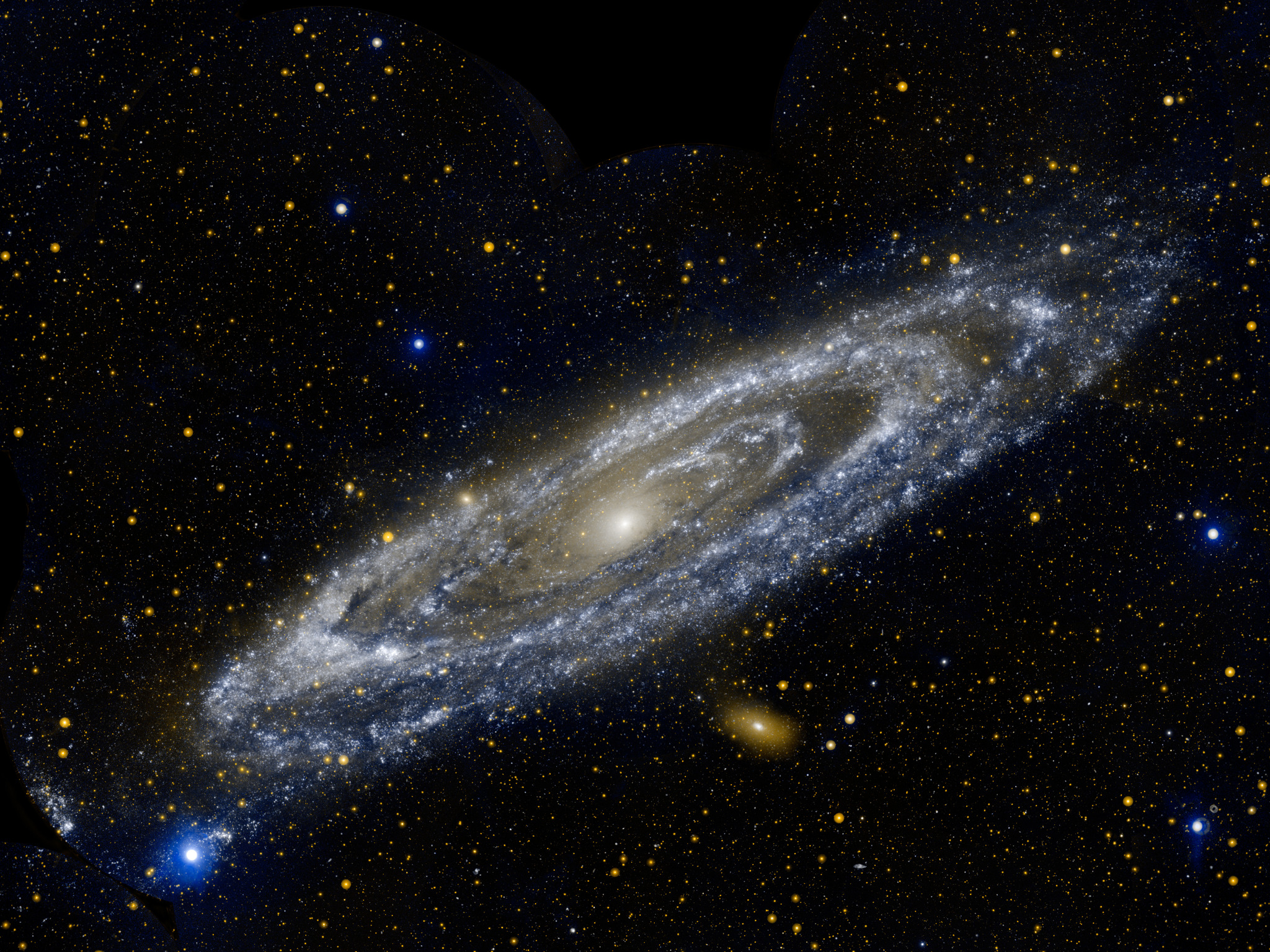Looking at the universe in different parts of the electromagnetic spectrum can reveal features and structures that are invisible to human eyes. The vast black emptiness of space explodes into a sea of colour when we use cameras to expand our vision. Looking at a galaxy through human eyes can be a simple and seemingly uninteresting view, but in infrared, microwave, or ultraviolet wavelengths we see the deeper layers of the vast array of stars. The closest large spiral galaxy and a cousin of our own Milky Way, the Andromeda galaxy, is revealed in ultraviolet.

The Galaxy Evolution Explorer (GALEX) reveals UV features in M31, highlighting the stars and the bright star forming regions of the galaxy, while peering past the colder gas and dust between the stars. With M31 in particular, we can see the strange star-forming ring that dominates the galaxy, likely an artifact of a past collision with a minor galaxy.
Amazing what we are shown when we see things in a different light.
